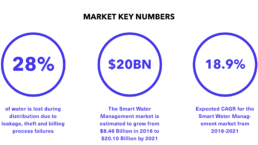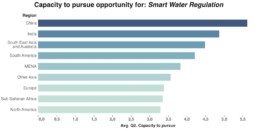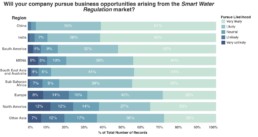Regulating fresh water extraction and consumption wisely can dramatically reduce the withdrawal of water in many contexts and open the area up to private investment.
Smart regulation can significantly influence fresh water availability and consumption. As a public good, water is often heavily regulated. With careful planning regulations in this area can reduce consumption in several ways and even result in more water being available for households and industry.

Introducing pricing mechanisms that encourage efficiencies among the large water consumers in agriculture and industry is a starting point. For example, introducing penalties for misuse, a price premium, or a progressive pricing scheme, whereby the first units of water are cheap, followed by rapidly rising prices for greater quantities, can incentivize the adoption of efficient water practices. The revenues from such a scheme can be reinvested to create more efficient water infrastructure. If kept in a closed loop, the funds could also help industry and agriculture create further savings and remain competitive in spite of rising water prices. To enable this, measuring and monitoring water use is crucial but can also be supplemented by other initiatives like labeling products to allow consumers to make water-efficient purchases.
Mobilizing private sector investment to renovate and expand water infrastructure is also an option. The OECD estimates that the societal benefits of expanding water infrastructure to meet the Millennium Development Goals can outweigh the costs by a factor of almost nine. This could warrant government action to incentivize private sector investments towards infrastructure. Indeed, businesses, governments, NGOs, and farmers have a shared interest in preserving water resources that, through smart regulation, can form the basis of many beneficial projects.
Available tools in this arena include: issuing water-related bonds, creating transparent and predictable regulatory environments, and developing a transparent pipeline of investable projects. However, it could also entail establishing private-public partnerships under which the private sector delivers most of the capital while the public shoulders most of the risk. Finally, governments (national and local) can also play a significant role in enabling better collaboration between stakeholders competing for the same water resources.
Survey Findings
In South America, this market opportunity is very positively in terms of impacts on society. This is not unexpected, as this region currently is struggling with water scarcity issues. Across all regions, this opportunity is assessed very positively.

As this opportunity has a great focus on regulation, it is interesting that respondents actually do not see stakeholders in politics as being the most supportive. Civil society stakeholders are expected to provide the greatest backing.
For all country income groups this market opportunity is optimistically assessed on its capacity to positively affect society.

When assessing the timeliness of this opportunity, almost half of all respondents see this opportunity as reaching maturity in 5 years or later.
This market was surveyed globally in 2014 by more than 5500 leaders from both the public and private sectors. The survey was conducted in collaboration with the research company YouGov. The survey results were originally published in the Global Opportunity Report 2015.

